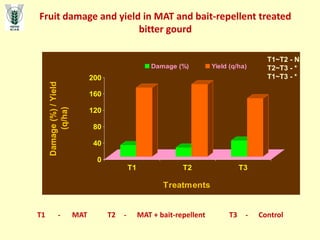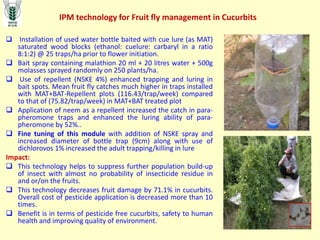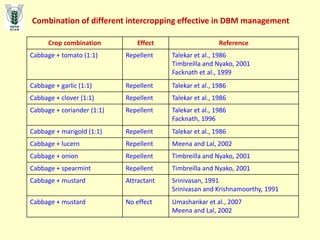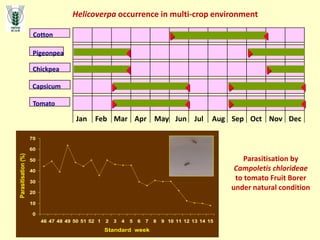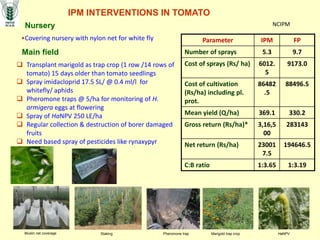This document discusses integrated pest management for vegetable crops. It notes that farmers often overuse pesticides, leading to issues like insecticide resistance. Key reasons for increasing pest problems include intensive mono-cropping and off-season cultivation. The document provides information on pesticide usage trends in India and different vegetable crops. It also lists several major pests affecting vegetables that have developed resistance to certain insecticides. The summary concludes with an overview of integrated pest management approaches like use of tolerant varieties, intercropping, biological control agents, and plant-based products that can help manage pests in a more sustainable manner.


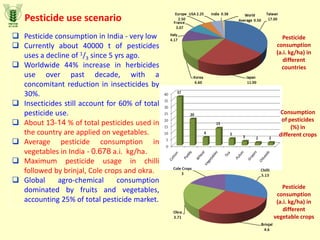




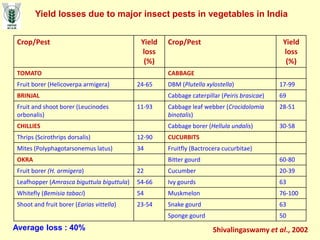


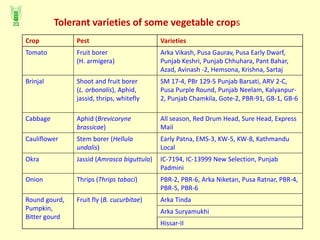
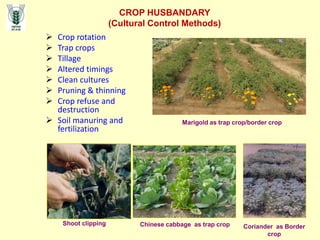

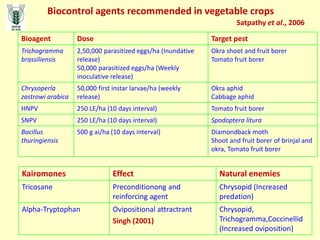
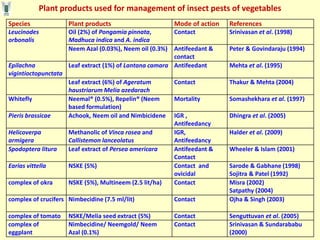



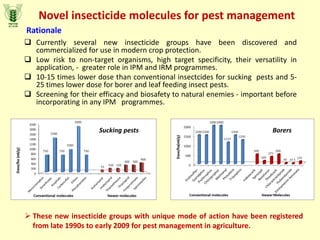


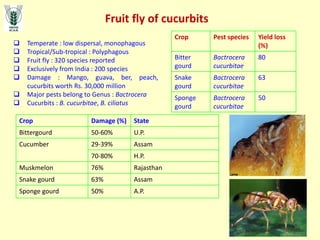

![Effect of MAT and bait-repellent spray on periodical
fruit damage (%) in bitter gourd
Cuelure: [4 P-acetoxyphenyl) - 2 butanone] – B. cucurbitae](https://image.slidesharecdn.com/icar7-220911101900-6313bbef/85/ICAR_7-pdf-24-320.jpg)
